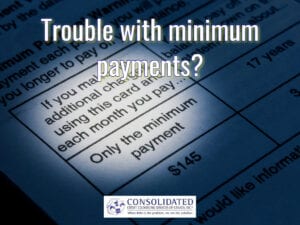Credit card debt can be expensive, but many Canadians don’t realize that one simple step can help lower the cost: asking your credit card company for a lower interest rate. While it may sound intimidating, many card issuers are open to negotiation, especially for long-term customers with good payment history. A reduced interest rate can make a big difference in how quickly you pay down debt and how much money you save in the long run.
Why ask for a lower credit card interest rate?
Credit cards are one of the most commonly used financial tools in Canada. Millions of Canadians rely on them for everyday living expenses, emergencies, and larger purchases. Credit cards do provide convenience, ease of use, and flexibility, but they also have one of the highest borrowing costs of any loan options.
According to government data, credit cards in Canada charge annual percentage rates, or APRs, between 19% to 22% on average. This means that carrying a balance month-to-month can quickly add up. Some benefits of a lower credit card interest rate:
Reduce interest
The first and biggest reason is simply that you can pay less in interest charges. With high APRs, even a relatively small balance can take years to pay off if you’re making only minimum payments.
A $5000 balance at 20% interest could end up costing you over $250 a year in interest alone, especially if you’re only paying the minimum each month. If you were able to get your interest rate reduced to 15%, you could save a significant amount over time.
More financial flexibility
With less money going towards interest payments, there’s more money in the budget for savings and an emergency fund. According to a 2025 trend report by Equifax, the average credit card pay rate, which is the percentage of balance repaid every month, dropped to 52.9%. This means that many Canadians are only able to pay part of their balance each billing cycle. Reducing interest payments frees up more money to tackle your own financial goals instead of paying the credit card company.
Easier debt management and financial confidence
An interest rate reduction is especially useful if you’re carrying a balance monthly, managing multiple cards, or trying to become debt-free. If you’re only making minimum payments, the interest payment amounts can overwhelm the amounts going towards paying off the principal.
This can give you more control over your finances and avoid the long-term borrowing cycle. It can also provide a sense of financial confidence and empowerment.
Tips on requesting a lower credit card interest rate
- Be prepared with your statements and documentation, current balance, credit score, and payment history.
- If you have been paying the minimum consistently, not skipping payments or being late, this can work in your favour while negotiating. It demonstrates reliability and might make them more inclined to work with you.
- If you have been loyal to the financial institution for a while, highlight that. Often, loyalty could also help you receive better outcomes.
- Compare offers. Check comparative rates for competitor banks, lower interest cards, and balance transfer options. You can use this information as leverage to negotiate. The key here is that you should ideally be prepared to make that move if they don’t agree to your request. Do your research beforehand so you can be sure of the details!
- Be confident and polite. Ask to speak to a manager if the first person you speak to cannot help. Or try to call back later, since a different representative may proceed differently. Representatives may interpret policies differently, or may have the power or willingness to adjust the rate for you.
- If you’re facing financial hardship, you can try to request a temporary reduction or suspension of interest and fees. Some financial institutions are willing to consider this under their hardship programs, if they have one.
What if my request for a lower interest rate doesn’t work?
- Switch to a lower-rate card. Try to find something under 15%, and read the fine print!
- Balance transfer cards. Some credit cards come with introductory balance transfer offers, with low or no interest for a few months. If you can find a 0% balance transfer card, it can provide a break from high interest rates. This way, you can focus on making larger payments towards your principal.
- If possible, consider getting a line of credit. The average interest rate for unsecured lines of credit is around 8% to 9%, far below credit card interest rates. You can save a chunk of change this way.
- Debt consolidation is another option. The average interest rate for personal loans is around 7.5% to 8%, which is even lower than a line of credit. Consolidating your debts at these rates can drastically lower your costs, while also streamlining your payments.
- Speak to a credit counsellor or financial advisor for tailored money management advice. Check to see if they are regulated and reputable organizations.
Key Takeaways
The average credit card interest in Canada is between 19% to 22%, with many cards charging even more. Getting a lower rate on your credit card can save hundreds of dollars annually, thousands over time, open up some room in your budget, and get you to a debt-free life quicker.
Prepare and gather your documentation; it can help you in your negotiations. Comparison shop, be firm and polite, and call back if you need to. If it doesn’t work, you have the option of a lower interest rate card, balance transfer, lines of credit, or Debt Management Program. If you’d like to know more, you can contact one of our trained Credit Counsellors for advice – they can help you figure out which debt solution could be the right fit for your specific situation and journey.



